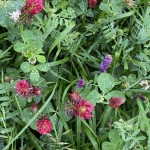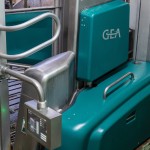Facing a challenge, a greener solution emerges
Added 11 months ago
By Hawke's Bay Future Farming Trust

After the Christchurch earthquakes, Andrew Cummins, a seasoned expert in native plant restoration, was tasked with revegetating the Port Hills. However, the clay-rich, disturbed soil posed a significant obstacle for traditional seedling planting methods.
Seedlings, typically young plants nurtured in containers, often struggle to survive when transplanted. Inspired by nature's approach, Cummins opted for a more natural solution: sowing seeds directly.
Success Through Innovation: The Enviroblanket
To boost germination rates, Cummins developed a method called the "Enviroblanket." This involved mimicking a forest floor by enriching the soil with a layer of compost, replicating the organic matter that aids moisture retention.
The initial trial on a small plot proved successful. Cummins then scaled up the technique, achieving impressive results on progressively larger areas. Remarkably, his method yielded a 60% increase in plant survival compared to conventional seedling planting.
Adapting and Evolving: From Compressed Air to Drones
Red Tree Environmental Solutions, Cummins' company, has continuously refined the Enviroblanket process. They've discovered its effectiveness in coastal areas, waterways, and wetlands – environments with good natural moisture.
Seed dispersal methods have also undergone advancements. Early attempts involved compressed air, but Red Tree has since adopted innovative techniques like spreading seeds through constructed wetlands using farm machinery or employing drones for precise seed placement in hard-to-reach locations.
From Product to Process: Customization for Optimal Results
Red Tree initially envisioned the Enviroblanket as a one-size-fits-all solution. However, they've recognized the importance of tailoring the approach to each project. This involves meticulous site analysis, customized seed and nutrient mixes, and ongoing monitoring to ensure success.
A Cost-Effective Option for the Future
The Enviroblanket's potential extends beyond ecological restoration. It offers a cost-effective alternative for farmers seeking to regenerate native bush on retired land. Traditional seedling planting can be expensive, hindering large-scale initiatives.
Direct seeding with the Enviroblanket method has the potential to significantly reduce costs, making native plant restoration more accessible to farmers. Trials are currently underway with the Greater Wellington Regional Council's Recloaking Papatūānuku project, demonstrating the promise of this approach for large-scale land regeneration.
Inspired by Nature: A Model for the Future
Cummins emphasizes that the Enviroblanket is an ongoing experiment guided by the principles of biomimicry. By understanding how nature regenerates forests, they can replicate those conditions and foster successful plant growth. The Enviroblanket serves as a testament to the power of innovation inspired by the natural world.
Check out video on The Press article here.
Join the conversation
Be the first to leave a comment.
Leave a comment
All comments are reviewed before they are published on the website. Your email address will not be published.




Family-Owned Farm Embraces Regenerative Agriculture to Grow and Educate


